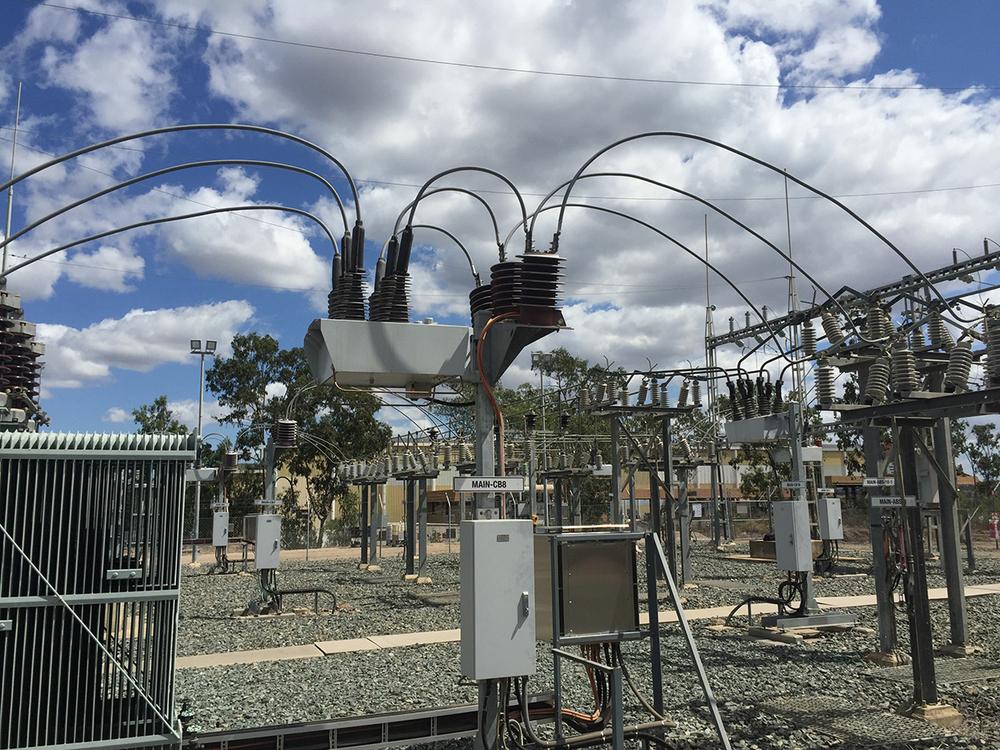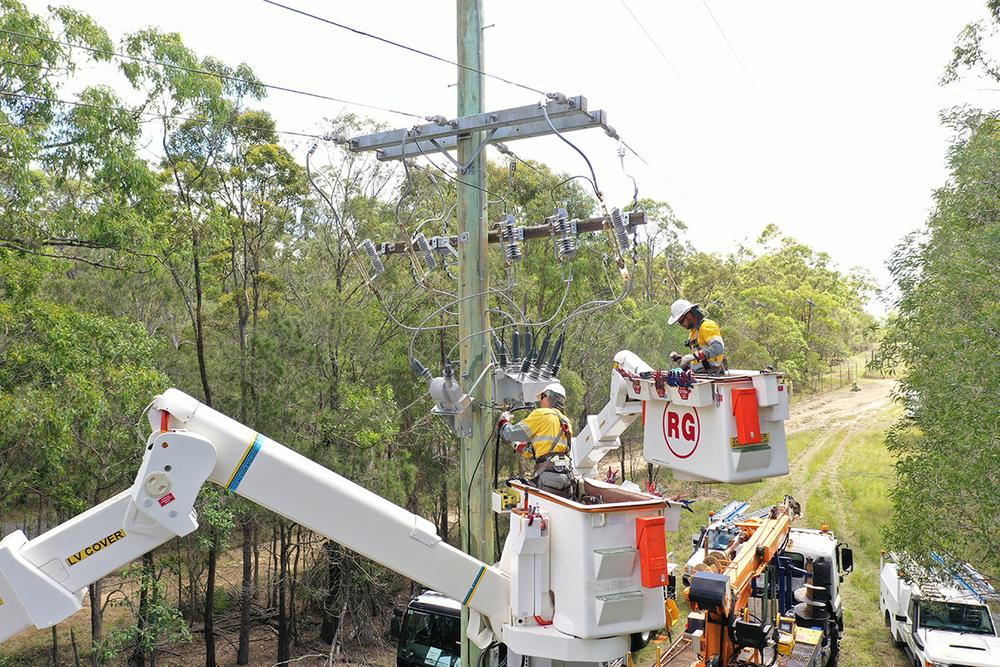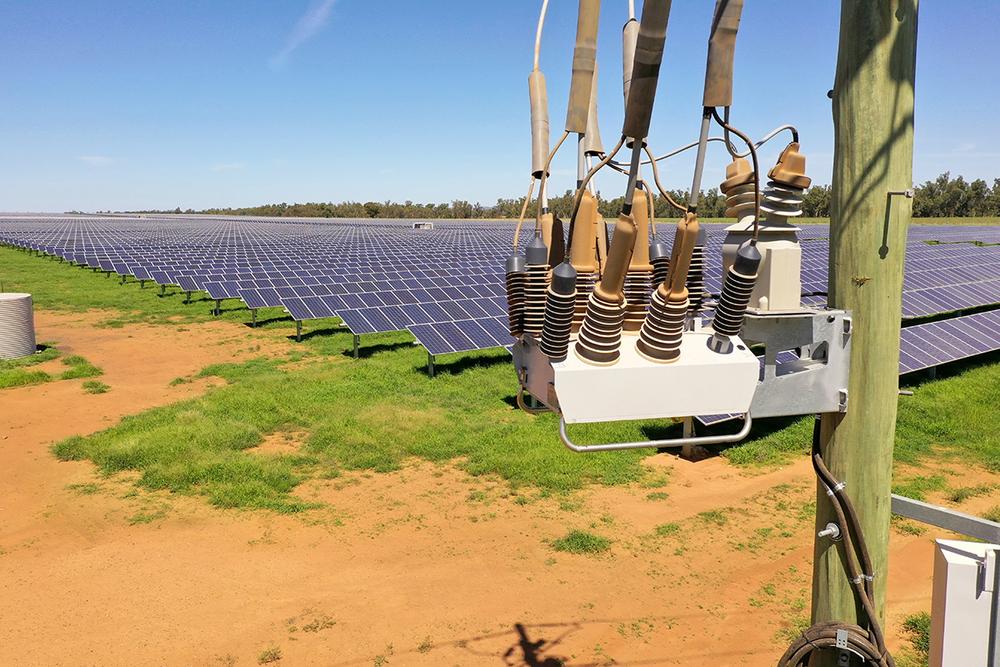Technical Article
Published 05/2022
Frequency Protection Explained: Variants and Rationale
As the world transitions to distributed energy resources and renewable generation, frequency protection has become a commonly specified technique for reliable asset integration.
Frequency protection monitors the power system frequency, and signals when the frequency departs from normal.
In this article, we explore what normal frequency is, what scenarios cause power system frequency to vary, and some of the common protection elements which act on these fault scenarios.

Power System Frequency
Following the famous disagreements between Edison and Westinghouse in the early days of electrical engineering, the victor of the debate between Alternating Current (AC) and Direct Current (DC) was the former.
Alternating current is a constantly varying magnitude of current over time, while DC is constant.
While beyond the scope of this article, AC has advantages in Electromagnetic Induction, which allowed technologies such as Transformers to scale and transport bulk energy. While HVDC is a viable alternative today, the vast majority of power transmission and distribution is AC.
When “Frequency” is discussed in a Power System context, it is the cycles per second of the electrical current. For most transmission and distribution, it is either 50 Hz or 60 Hz (although some rail applications use lower frequencies).
What Scenarios Cause Power System Frequency to Vary?
Frequency is a fundamental quantity in the design of an AC Electrical network. All equipment selected must be designed to operate at this frequency, and in a healthy system, there should be very little movement.
The frequency of an electricity network is generally governed by the “synchronous generators” in conventional power plants. These massive machines generate power at a specified frequency.
At a steady state, at rated power, the frequency should not vary.
When the power demanded of generator changes, we can start to see variations in frequency. The power system “inertia”, or stored energy, will attempt to maintain the frequency output under higher load.
A simple analogy is the behaviour of a car. When driving at a constant speed, say 50 kph, the cars’ engine rotates at a specific RPM. RPM is a form of frequency.
When that car reaches an inclined hill, more power output is needed to achieve the same speed. When this happens, the RPM will start to fall, as the engine is placed under more load.
This is frequency falling when the power output is the same. If you can increase the power output, the car avoids stalling. If you can’t, the car stalls. In our power system example, if our generator can’t match the load, the generator stalls, and the power goes out.
Same too when the car reaches a decline hill. In this case, less power output is needed to maintain the same speed. If you didn’t reduce your accelerator application, the RPM (And car speed) would increase, at the same power output. In this case, the generator is exceeding the demand, and the frequency would increase if the power generation remained the same.
This is why Frequency is a useful protection metric. It allows us to see if the generation and load is balanced and allows protection engineers to intervene if this mismatch becomes an issue.
Why is Frequency Protection being more commonly used?
The main reason is the adoption of distributed generation. Generators need protection against frequency events, and these connections need frequency protection.
Furthermore, these distributed generators often use “asynchronous generation”, such as power inverters in solar power plants. With no mechanical inertia behind them, these generation sites have less capacity to respond to fluctuations in power system frequency without disconnection.
With this in mind, let’s explore some typical frequency protection elements:
- 81O Over Frequency
- 81U Under Frequency
- 81R Rate of Change of Frequency
ANSI 81O Over Frequency
As we explored in our car analogy, a network node will experience an over frequency event when either the generation is too high, or the load is too low.
Over frequency protection is configured by applying a set point above normal operating frequency. When this threshold is reached, the protection relay operates, triggering an alarm or the operation of a circuit breaker.
In NOJA Power’s OSM Recloser system, the over frequency feature monitors the power frequency and can be configured to either alarm or trip the recloser if the frequency goes too high.
ANSI 81U Under Frequency
Underfrequency occurs when there is a generation shortfall. That is, when there is too much load for the available generation capacity.
Underfrequency protection is often used in a “load shedding scheme”, where the distribution network automatically disconnects parts of the network when there is insufficient generation.
This allows the network operator to partially reduce service, rather than allowing the entire system to experience a blackout.
Using OSM Reclosers positioned around the distribution network, these devices can be automatically triggered to “shed load” by progressively powering down parts of the network when there is insufficient generation.
If the race to disconnect load is faster than the frequency falling, a network can regain control by reaching the point where remaining generation matches the load that is left connected to the network.
At this point, network operators can progressively increase power, and reconnect parts of the network, avoiding a complete blackout event.
Underfrequency works by monitoring the system frequency to see if it reaches a threshold below the operating frequency. If this occurs, the relay activates and can either automatically trip a circuit breaker or alert the network operator.

81R Rate of Change of Frequency;
The last frequency element for consideration is ANSI 81R Rate of Change of Frequency, or ROCOF.
This protection deals with a fundamental shortfall of over frequency and underfrequency protection – the non-detection zone.
Both over and under frequency protection require the network conditions to reach a bad condition before they are detected.
If the network is normally at 50 Hz, and a generation shortfall occurs, a circuit breaker without ROCOF would only know about the problem when the frequency reaches a low point. By this time, the frequency may have fallen too far to be saved by load shedding.
ROCOF instead looks at the movement of frequency over time. While minor movements in frequency are tolerable, a major shift, say 0.5 Hz/s, is more indicative of serious issues.
By monitoring ROCOF, circuit breakers can operate faster, because the protection system can see the problem before the frequency has dropped.
Using our car analogy again, ROCOF is like the eyes of the driver. ROCOF can see the dropping engine RPM when the car starts going up the hill, rather than waiting for the engine to drop to a certain RPM before increasing the power.
ROCOF is especially useful for renewable generation, where the low inertia generation causes rapid fluctuations in frequency. By speeding up response, ROCOF provides generators with an increased capacity to reliably operate.

Conclusion
All these frequency features are available in NOJA Power’s OSM Recloser system, and many generation sites will use a combination of them.
Likewise, any network that wishes to implement an automatic load shedding scheme can do so with NOJA Power OSM Reclosers. This design can help avoid blackouts under generation shortfalls, improving the power system performance and reliability of power.
“With more and more asynchronous generation being connected to the grid, frequency protection is playing an even more important role in maintaining stability of the grid,” says NOJA Power Group Managing Director Neil O’Sullivan.
“All of NOJA Power's complete range of reclosers and recloser controls provide the complete suite of frequency protection required by today's modern power grid.”
To find out more, visit www.nojapower.com.au or contact your local NOJA Power Distributor.
Want to stay up to date with Electrical Distribution Technology?
Join our list for a free weekly technical bulletin, as we share our Global Electrical Engineering experience directly to your inbox.
Subscribe →